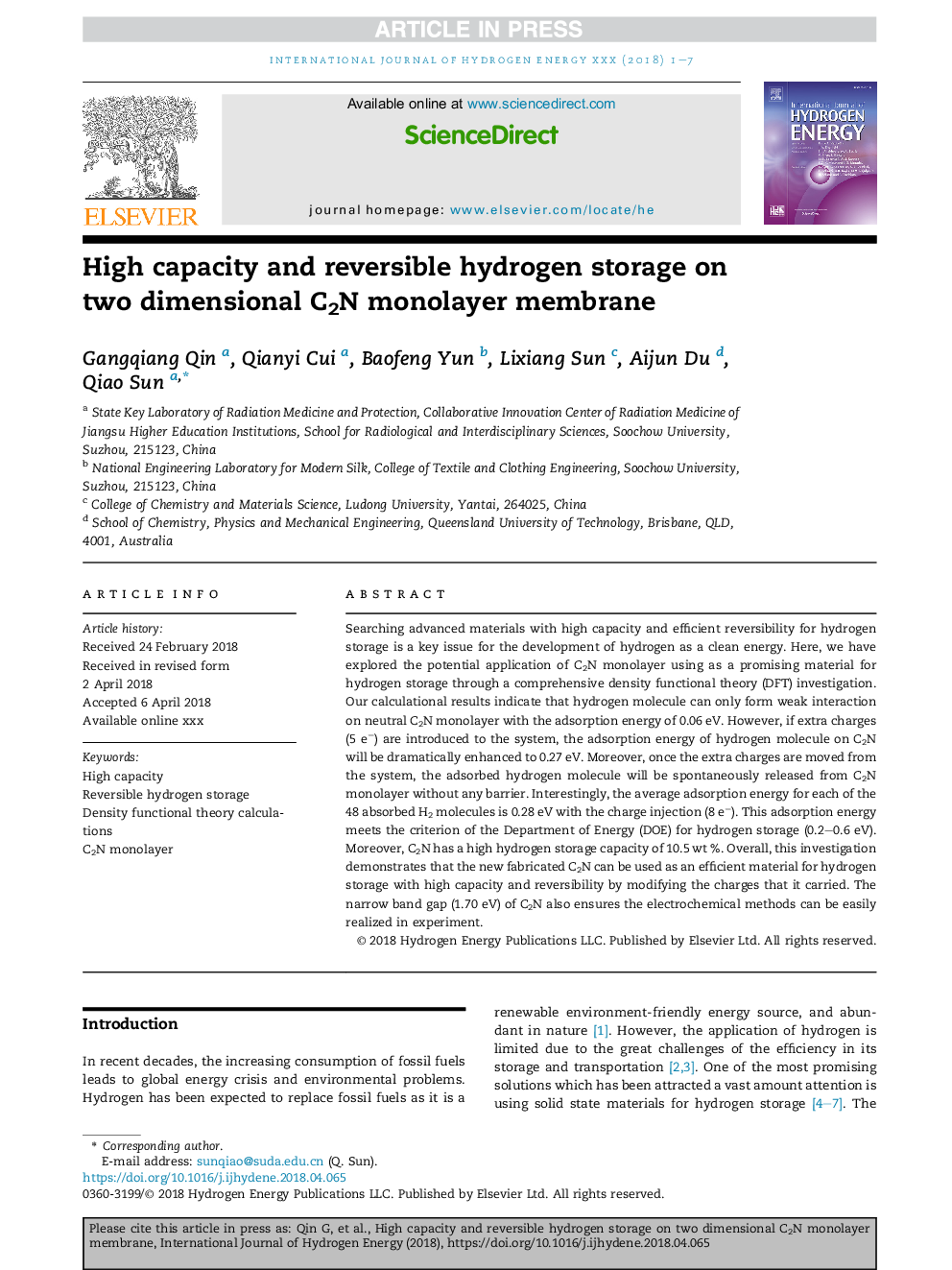| Article ID | Journal | Published Year | Pages | File Type |
|---|---|---|---|---|
| 7705967 | International Journal of Hydrogen Energy | 2018 | 7 Pages |
Abstract
Searching advanced materials with high capacity and efficient reversibility for hydrogen storage is a key issue for the development of hydrogen as a clean energy. Here, we have explored the potential application of C2N monolayer using as a promising material for hydrogen storage through a comprehensive density functional theory (DFT) investigation. Our calculational results indicate that hydrogen molecule can only form weak interaction on neutral C2N monolayer with the adsorption energy of 0.06Â eV. However, if extra charges (5 eâ) are introduced to the system, the adsorption energy of hydrogen molecule on C2N will be dramatically enhanced to 0.27Â eV. Moreover, once the extra charges are moved from the system, the adsorbed hydrogen molecule will be spontaneously released from C2N monolayer without any barrier. Interestingly, the average adsorption energy for each of the 48 absorbed H2 molecules is 0.28Â eV with the charge injection (8 eâ). This adsorption energy meets the criterion of the Department of Energy (DOE) for hydrogen storage (0.2-0.6Â eV). Moreover, C2N has a high hydrogen storage capacity of 10.5Â wt %. Overall, this investigation demonstrates that the new fabricated C2N can be used as an efficient material for hydrogen storage with high capacity and reversibility by modifying the charges that it carried. The narrow band gap (1.70Â eV) of C2N also ensures the electrochemical methods can be easily realized in experiment.
Related Topics
Physical Sciences and Engineering
Chemistry
Electrochemistry
Authors
Gangqiang Qin, Qianyi Cui, Baofeng Yun, Lixiang Sun, Aijun Du, Qiao Sun,
